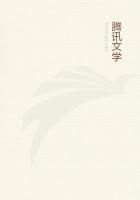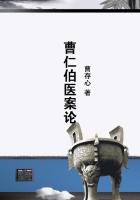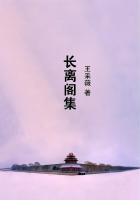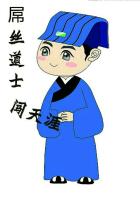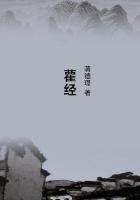The other experiment, though of a different character, is quite as convincing. In certain regions about Rome, in the Campania, malaria is so prevalent that, in the autumn, almost everyone in the district is attacked, particularly if he is a newcomer. Dr.
Sambon and a friend lived in this district from June 1 to September 1, 1900. The test was whether they could live in this exceedingly dangerous climate for the three months without catching malaria, if they used stringent precautions against the bites of mosquitoes. For this purpose the hut in which they lived was thoroughly wired, and they slept under netting. Both of these gentlemen, at the end of the period, had escaped the disease.
Then came the fifth and final triumph--the prevention of the disease. The anti-malarial crusade which has been preached by Sir Ronald Ross and has been carried out successfully on a wholesale scale in Italy and in parts of India and Africa, has reduced enormously the incidence of the disease. Professor Celli of Rome, in his lecture room, has an interesting chart which shows the reduction in the mortality from malaria in Italy since the preventive measures have been adopted--the deaths have fallen from above 28,000 in 1888 to below 2000 in 1910. There is needed a stirring campaign against the disease throughout the Southern States of this country.
The story of yellow fever illustrates one of the greatest practical triumphs of scientific medicine; indeed, in view of its far-reaching commercial consequences, it may range as one of the first achievements of the race. Ever since the discovery of America, the disease has been one of its great scourges, permanently endemic in the Spanish Main, often extending to the Southern States, occasionally into the North, and not infrequently it has crossed the Atlantic. The records of the British Army in the West Indies show an appalling death rate, chiefly from this disease. At Jamaica, for the twenty years ending in 1836, the average mortality was 101 per thousand, and in certain instances as high as 178. One of the most dreaded of all infections, the periods of epidemics in the Southern States have been the occasions of a widespread panic with complete paralysis of commerce. How appalling the mortality is may be judged from the outbreak in Philadelphia in 1793, when ten thousand people died in three months.[5] The epidemics in Spain in the early part of the nineteenth century were of great severity. A glance through La Roche's great book[6] on the subject soon gives one an idea of the enormous importance of the disease in the history of the Southern States. Havana, ever since its foundation, had been a hotbed of yellow fever. The best minds of the profession had been attracted to a solution of the problem, but all in vain. Commission after commission had been appointed, with negative results; various organisms had been described as the cause, and there were sad illustrations of the tragedy associated with investigations undertaken without proper training or proper technique. By the year 1900, not only had the ground been cleared, but the work on insect-borne disease by Manson and by Ross had given observers an important clue. It had repeatedly been suggested that some relation existed between the bites of mosquitoes and the tropical fevers, particularly by that remarkable student, Nott of Mobile, and the French physician, Beauperthuy. But the first to announce clearly the mosquito theory of the disease was Carlos Finlay of Havana. Early in the spring of 1900, during the occupation of Cuba by the United States, a commission appointed by Surgeon-General Sternberg (himself one of the most energetic students of the disease) undertook fresh investigations. Dr. Walter Reed, Professor of Bacteriology in the Army Medical School, was placed in charge:
Dr. Carroll of the United States Army, Dr. Agramonte of Havana and Dr. Jesse W. Lazear were the other members. At the Johns Hopkins Hospital, we were deeply interested in the work, as Dr.
Walter Reed was a favorite pupil of Professor Welch, a warm friend of all of us, and a frequent visitor to our laboratories.
Dr. Jesse Lazear, who had been my house physician, had worked with Dr. Thayer and myself at malaria, and gave up the charge of my clinical laboratory to join the commission.
[5] Matthew Carey: A Short Account of the Malignant Fever, Philadelphia, 1793.
[6] R. La Roche: Yellow Fever, 2 vols., Philadelphia, 1855.
Many scientific discoveries have afforded brilliant illustrations of method in research, but in the work of these men one is at a loss to know which to admire more--the remarkable accuracy and precision of the experiments, or the heroism of the men--officers and rank and file of the United States Army; they knew all the time that they were playing with death, and some of them had to pay the penalty! The demonstration was successful--beyond peradventure--that yellow fever could be transmitted by mosquitoes, and equally the negative proposition-- that it could not be transmitted by fomites. An interval of twelve or more days was found to be necessary after the mosquito has bitten a yellow fever patient before it is capable of transmitting the infection. Lazear permitted himself to be bitten by a stray mosquito while conducting his experiments in the yellow fever hospital. Bitten on the thirteenth, he sickened on the eighteenth and died on the twenty-fifth of September, but not until he had succeeded in showing in two instances that mosquitoes could convey the infection. He added another to the long list of members of the profession who have laid down their lives in search of the causes of disease. Of such men as Lazear and of Myers of the Liverpool Yellow-Fever Commission, Dutton and young Manson, may fitly be sung from the noblest of American poems the tribute which Lowell paid to Harvard's sons who fell in the War of Secession:
Many in sad faith sought for her, Many with crossed hands sighed for her;

